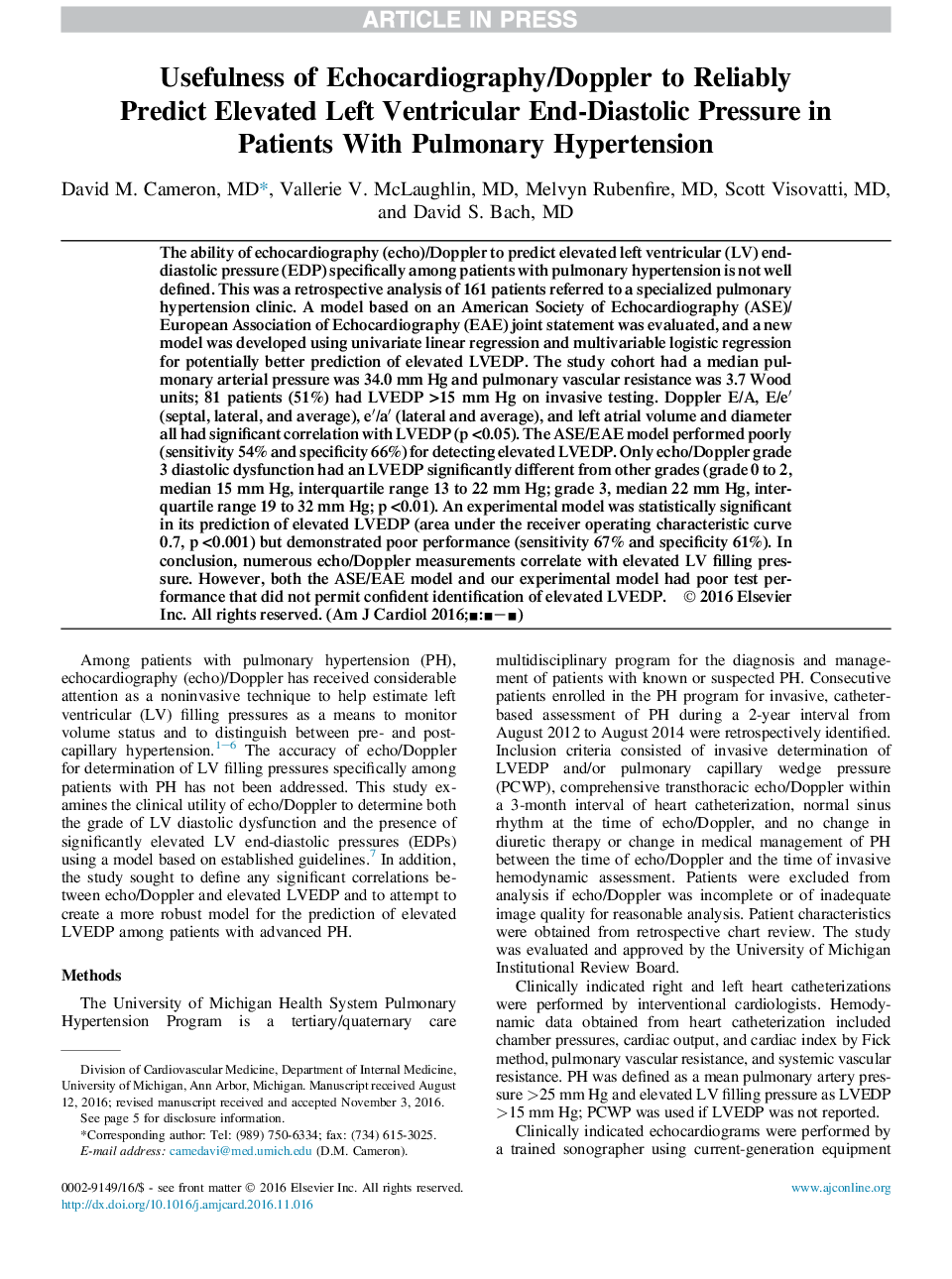| Article ID | Journal | Published Year | Pages | File Type |
|---|---|---|---|---|
| 5595288 | The American Journal of Cardiology | 2017 | 5 Pages |
Abstract
The ability of echocardiography (echo)/Doppler to predict elevated left ventricular (LV) end-diastolic pressure (EDP) specifically among patients with pulmonary hypertension is not well defined. This was a retrospective analysis of 161 patients referred to a specialized pulmonary hypertension clinic. A model based on an American Society of Echocardiography (ASE)/European Association of Echocardiography (EAE) joint statement was evaluated, and a new model was developed using univariate linear regression and multivariable logistic regression for potentially better prediction of elevated LVEDP. The study cohort had a median pulmonary arterial pressure was 34.0Â mm Hg and pulmonary vascular resistance was 3.7 Wood units; 81 patients (51%) had LVEDP >15Â mm Hg on invasive testing. Doppler E/A, E/eâ² (septal, lateral, and average), eâ²/aâ² (lateral and average), and left atrial volume and diameter all had significant correlation with LVEDP (p <0.05). The ASE/EAE model performed poorly (sensitivity 54% and specificity 66%) for detecting elevated LVEDP. Only echo/Doppler grade 3 diastolic dysfunction had an LVEDP significantly different from other grades (grade 0 to 2, median 15Â mm Hg, interquartile range 13 to 22Â mm Hg; grade 3, median 22Â mm Hg, interquartile range 19 to 32Â mm Hg; p <0.01). An experimental model was statistically significant in its prediction of elevated LVEDP (area under the receiver operating characteristic curve 0.7, p <0.001) but demonstrated poor performance (sensitivity 67% and specificity 61%). In conclusion, numerous echo/Doppler measurements correlate with elevated LV filling pressure. However, both the ASE/EAE model and our experimental model had poor test performance that did not permit confident identification of elevated LVEDP.
Related Topics
Health Sciences
Medicine and Dentistry
Cardiology and Cardiovascular Medicine
Authors
David M. MD, Vallerie V. MD, Melvyn MD, Scott MD, David S. MD,
